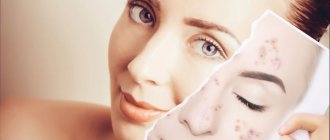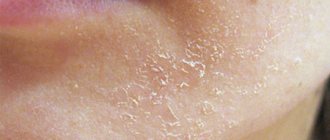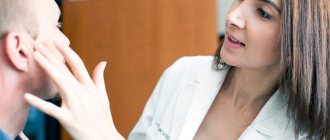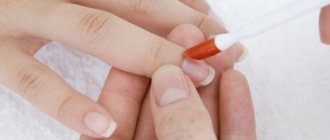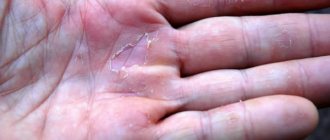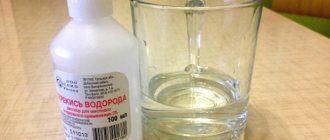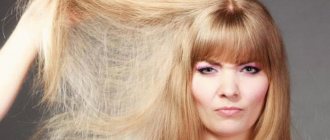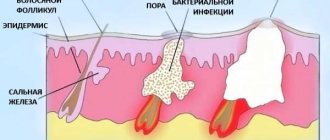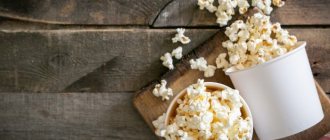Perfectly smooth skin without pimples and acne is the dream of every woman. Because skin imperfections can bother both young teenagers and mature ladies.
However, getting rid of them can be very problematic, as well as achieving a long-term effect.
An expert in the online publication BelNovosti, a specialist in the field of beauty and makeup, Lesya Introvert, told how to deal with pimples.
Always a relevant and burning topic. Every year there are more and more new studies of the problem and new ways to solve it. To understand which solution is right for you, you need to understand the root cause.
The condition of the skin can be influenced by both external and internal factors. Today we will look at the most common ones.
Let's start with external factors :
1) Insufficient cleansing of the skin.
After a hard day at work, you definitely need to remove makeup from your face (perform makeup remover), even if you were only wearing powder and concealer.
Decorative cosmetics should be washed off with micellar water or hydrophilic oil. Whichever you prefer, choose for yourself. When makeup is removed from the skin, be sure to cleanse the skin with foam.
The foam will cleanse your pores of impurities and remove remnants of the previous product. Washing with foam every morning is also a mandatory ritual. A large amount of sebum is released on the skin during the night, so it needs to be cleansed.
How to get rid of acne at home?
Acne: causes of appearance
At least once in their life, every person faces such an unpleasant problem as acne. And, as luck would have it, in most cases they appear on the eve of some important events, for example, a date or a holiday. Of course, in modern cosmetology there are a lot of products that help fight this scourge, but not all of them guarantee a positive result, and some can even harm our skin. Therefore, the question often arises: how to get rid of acne at home? After all, the effectiveness of folk remedies has been proven for a long time. Why might this problem occur? Pimples appear due to the fact that the skin pores are clogged by the sebaceous glands, and if they become infected, this can result in inflammation.
Acne formation occurs for several reasons. This could be puberty, stressful situations, poor diet, sun exposure, hormonal imbalance, allergic reactions and simply improper skin care. And if you do not pay due attention to your face and body, the result will be depressing. But the main thing to remember is to never squeeze pimples! Because spots and even scars will appear in these places, which can remain for life. In addition, there is a risk of infection. The skin must be regularly cleansed and cared for using folk remedies, limiting the use of decorative cosmetics. How to do this correctly at home? This will be discussed in our article.
Preventing acne
To initially avoid such a nuisance as acne, you should follow some simple recommendations. The first rule is to cleanse your skin at least twice a day, morning and evening. It is very undesirable to use ordinary toilet soap, as it dries out the skin. It is best to use a lotion or tonic with an antibacterial effect, but not alcohol-based (alcohol also dries out the skin). The ideal option would be salicylic acid, which is freely available in pharmacies - just apply the solution to a cotton swab and wipe your face. We should not forget about a healthy diet: drink more fluids, eat cereals, fish, dairy products, vegetables and fruits, limiting sweets and starchy foods in your diet. You should also deep clean your face at least once a week using a scrub or peeling. And, of course, walk more often in the fresh air, try to maintain a daily routine and sleep schedule, and try to give up bad habits - alcohol and nicotine have a very detrimental effect on the condition of the skin, causing acne. By following these simple rules, you can easily maintain healthy and fresh skin.
How to get rid of acne at home?
Decoctions and compresses for acne
1. One of the universal medicinal plants is chamomile. It relieves irritation and inflammation, soothes the skin. Preparing the infusion is simple: pour boiling water over the flowers of the plant and leave for half an hour. Then apply gauze or a napkin soaked in the broth (do not squeeze too hard) to different parts of the face, the more often the better. Chamomile infusion is a very useful and completely harmless remedy, it can be used without restrictions. The broth can be frozen and wiped with ice cubes on the face.
2. Another well-proven remedy for acne is aloe juice. It has soothing, antibacterial and anti-inflammatory properties. For the procedure, you need to cut the aloe stem and squeeze out the juice (or simply purchase a ready-made infusion at the pharmacy). Heat the resulting liquid slightly, moisten gauze or a napkin in it, and apply to the forehead, cheeks, cheekbones, nose and chin.
3. Regular soda also helps to effectively fight acne. One teaspoon of baking soda should be diluted in a glass of water at room temperature, add a teaspoon of sugar, and make a compress from the resulting liquid (moisten gauze and squeeze lightly). After the procedure, you need to wash your face with cold water and apply butter to it. After an hour, wash again using laundry soap.
Acne masks
1. Buy blue clay at the pharmacy and dilute it in water to the consistency of sour cream. After this, apply the resulting mixture to your face and hold for 15 minutes until completely dry. This mask not only dries out acne, but also relieves inflammation and redness.
2. Bodyaga will also help eliminate this problem. To do this, bodyagi powder needs to be diluted with water to make a paste, lubricate your face with it and rinse off after 10 minutes. Bodyaka also removes oily shine, cleanses pores and makes the skin elastic.
3. A well-known natural antiseptic is natural honey. To make a honey mask, you need to mix 50 g of honey with 50 g of olive oil, add the yolk and apply to the face for 20 minutes. The skin will become silky and acne will disappear very quickly.
4. A gelatin mask will also help get rid of acne. A tablespoon of gelatin must be mixed with milk, heated, and applied hot to the face. Wait until the mask turns into a film and remove. The number of acne will be significantly reduced
5. A mask made from kefir and oatmeal is very good for fighting acne. To do this, grind a tablespoon of flakes into flour, dilute it in a glass of kefir and add a couple of drops of lemon oil. Leave on your face for 20 minutes, then wash with warm water.
6. You can also resort to horseradish. Grate the vegetable on a fine grater, drop two drops of tea tree oil into the resulting pulp and apply to the face for 20 minutes. The skin will turn slightly red, but it’s okay - this is the process of fighting acne.
7. Laundry soap gives excellent results. To get an effective anti-acne mask, you need to grate a piece and use water to whip up a foam. The thicker the foam, the better. Add a pinch of salt to it and apply to your face for half an hour.
Acne lotions and tinctures
1. Dilute parsley juice with vodka (3:1 ratio) and wipe your face with a cotton swab.
2. Pour 100 g of vodka over white lily petals, leave for two weeks, and wipe the skin.
3. Pour hot water over mint leaves, leave for 25 minutes and strain. Add a few drops of lemon juice and a teaspoon of boric alcohol to the tincture - and the lotion is ready.
4. Pour 150 g of boiling water over birch buds or leaves, steam over low heat for five minutes, leave for half an hour and cool. Wipe your face several times a day.
5. Crush the dill in a mortar, squeeze out the juice, and wipe the resulting liquid onto the skin.
6. Squeeze a slice of lemon into a spoon and wipe over oily and sebaceous skin.
Ointments and lotions for acne
1. Brew natural coffee and apply the residue to your face like an ointment. Wash off after 10 minutes.
2. Pour boiling water over raspberry leaves, crush in a mortar, squeeze out the juice and grind it with butter. Apply at night, spreading the resulting mixture onto pimples.
3. Apply toothpaste (preferably based on medicinal herbs) to pimples before going to bed.
4. Pour a tablespoon of elecampane into a glass of boiling water and, like a lotion, apply cotton wool soaked in the broth to the pimples for half an hour. After the procedure, lubricate your face with cream.
5. Massage the pimples with grated white soap and salt using a cotton swab.
Peeling (scrub) for acne
Since often dead skin cells do not allow you to completely get rid of acne, it is necessary to cleanse your face once a week with high-quality peeling. To prepare an effective scrub at home, you need to mix a tablespoon of coffee with the same amount of sour cream and massage your face with this mixture for several minutes, then wash with warm water. This product is in no way inferior to store-bought cosmetic products, and in terms of natural qualities it is even superior.
Remedies for acne marks
1. After acne disappears, unsightly marks in the form of small scars often remain; sandalwood paste will help get rid of them. To prepare it, take sandalwood powder and soak it overnight in water or milk. Apply to damaged areas for 15 minutes and rinse with warm water after the paste dries.
2. Ordinary lemon is also great for getting rid of scars. In this case, no preparation is required, just wipe the problem areas with a slice of lemon. But due to the increased acidity, this method is not suitable for those with sensitive skin.
3. Garden parsley effectively fights acne marks. To do this, you need to prepare a decoction (pour boiling water over the herb and let it brew), pour it into molds and put it in the freezer. Wipe your face with the resulting ice slices every day.
4. Blue clay with lemon balm helps very well to get rid of scars. The clay should be diluted in water, add a few drops of lemon balm essential oil and stir into a thick mixture. Apply to wounds on the face for half an hour, then wash with warm water.
Remedies for different types of acne
1. If you are regularly bothered by white pimples, then potatoes will help. To do this, you need to boil one potato, mash it, add the yolk, two tablespoons of cream and a teaspoon of honey. Apply to face as a mask for 20 minutes.
2. Calendula solution also helps in the fight against white pimples. One tablespoon of the solution should be mixed with 100 ml of water and used as a daily lotion.
3. Aspirin will clear your face of white pimples. To do this, you need to mash 10 tablets in water, add a spoonful of honey and a boatload of nourishing cream. Keep on face for 15 minutes.
4. If you start to develop purulent acne, then homemade aloe will come to the rescue. The juice of this plant is able to draw out pus and cleanse the skin. You need to cut the aloe stem, peel it, apply it to the abscess and cover it with a band-aid overnight.
5. A difficult problem is internal acne, which is not so easy to get rid of. But there is one effective remedy that will help such a pimple mature. To do this, you need to take onions, butter and natural honey in equal proportions (for example, a tablespoon). Then mix all the ingredients, put on fire, and after boiling, cool. Add flour to the resulting slurry in such an amount that the resulting consistency resembles plasticine. Next, you need to knead the mass and apply it to the problem area. The longer you keep it, the better. This procedure will help not only draw out the pus, but also completely get rid of the pimple.
6. Most people suffer from small acne, but this is the most harmless type, and you can easily get rid of this problem with the help of traditional medicine. For example, celandine grass. You need to buy a bottle of tincture at the pharmacy and fill it with a liter of filtered or boiled water. Then, after two hours, strain and make compresses. This recipe will help clear the skin of small pimples and relieve inflammation.
7. An infusion of chamomile flowers will also help with this problem. Pour one tablespoon of dry raw material into two glasses of boiling water, leave and strain. Carry out the cleansing procedure using a napkin, moistening it in the infusion and applying it to problem areas of the face. This is done like this: moisten the napkin, wring it out lightly, hold it on your face, moisten it again and wring it out, and apply it to your face again. And so on several times. If you carry out this procedure daily, then very soon there will be no trace left of small pimples.
How to get rid of acne for a teenager?
A teenager's entry into adulthood begins with acne. During puberty, the child’s body undergoes restructuring, resulting in increased activity of the sebaceous glands. The skin of a 13-14 year old teenager becomes oily and periodically inflames, causing acne and pimples to appear. Children's skin is still very young and not spoiled by external negative factors, so it is better not to treat it with pharmaceutical products. Folk remedies will be ideal helpers for teenagers in the fight against acne, and one of them is mint lotion. To prepare it, you need to pour a glass of boiling water over fresh mint sprigs (you can take dry mint) and leave for 15 minutes. Then the liquid should be filtered, a teaspoon of boric alcohol, lemon juice and a teaspoon of calendula tincture should be added. The teenager should wipe their face with the resulting solution twice a day until all acne disappears. This lotion perfectly cleanses the skin, gives the face a fresh look and prevents the appearance of new acne.
Video on the topic: “how to get rid of acne at home”
Now you know a lot about acne and how to deal with it. Good luck in applying this information in your life.
——
Read also: how to rejuvenate your face?
3) Excessive amounts of skin care products.
Yes, this happens too. For example, on social networks we can often see the use of fabric masks on a daily basis.
This technique may not be suitable for everyone, and may even cause harm. When there are too many products, the skin is overloaded, and thus new inflammations can be caused. I am sure each of you has heard the expression “we are what we eat.”
And this is true even in the context of leather quality.
There are a lot of foods that can cause trouble on the face:
More Acne Recipes You Can Make at Home
In addition to the “heavy” recipes for acne remedies that you can prepare at home, there are a lot of others that are very quick to make and that even a small child can handle.
Here are some of them:
- The simplest recipe advice: use soap. Every day, before going to bed, you need to wash your face with soap and rinse with warm water.
- Lemon. This citrus should be used only after the face has been previously steamed in the bath. Simply lubricate your face with lemon and then rinse your skin after half an hour. This should be done once a week. You need to be careful not to let lemon juice get into your eyes.
- Something that almost everyone has is coffee. It is optimal, of course, to use natural coffee, and not its instant analogue. Using coffee against acne is very simple - just apply slightly dried coffee grounds to the skin of your face and hold it there for about ten minutes.
- Soda with sugar. You just need to take one tablespoon of sugar and soda, add it to hot water and mix. Wipe your face with the resulting liquid and then wash it with soap. The final chord is applying butter to the surface of the face.
- Mint leaves. Everything is done in the same way as ordinary tea: the leaves are poured with warm water, then they are infused for half an hour and filtered. Then a little calendula is added to the liquid - one spoon, a little boron solution and lemon juice. Everything is mixed, cooled and used to wipe problem areas of the skin. The procedure can be done twice a day.
- Birch leaves or buds. It’s not exactly easy to get, but those who are lucky enough to have a birch tree or two in their yard can try a very simple recipe. You just need to “boil” the leaves over low heat for 10 minutes and leave for another half hour. Wipe your face with the resulting decoction. There are no restrictions on the number of uses per day.
- Raspberries. Pour boiling water over the raspberry leaves, strain and squeeze out all the juice. The resulting liquid should be dissolved in butter and spread on the face before bed.
- Elecampane, chamomile, mint - all ingredients can be used both together and separately. The technology is extremely simple: pour boiling water over it, let it sit, cool and wipe your face with it. Use a couple of times a day.
3) Lactose intolerance.
This point is in addition to the previous one, since lactose is milk sugar. But we are talking about individual intolerance, which occurs quite often in adults.
After 23 years, lactose intolerance is normal. Bloating, discomfort, and inflammation on the face indicate that lactose is poorly absorbed in the body and should be excluded from the diet.
By the way, when treating acne, a lactose-free diet is the first recommendation of doctors. Some people get rid of only whole milk, while others have to completely eliminate dairy and fermented milk products.
Causes of acne formation
There are many different remedies to combat acne on the face, but before starting treatment, it is important to determine the very cause of their appearance, otherwise the treatment may be useless.
Experiences and frequent stress have a significant impact on the appearance of acne. Nowadays it is very difficult to avoid them, because we encounter them all the time.
Our body must somehow react to all this, so in times of stress it secretes even more sebaceous glands, which cause clogging of the pores on the skin, resulting in acne.
The causes of acne can be very diverse. In practice, acne appears more often in boys or girls during puberty.
During this period, the body begins the process of producing large amounts of sex hormones. As a result of their activity, the activity of the fat glands increases, as a result of which the pores can become clogged with produced sebum.
There are many reasons for the appearance of acne.
There are many causes of acne in adolescence and in adult men and women.
These include:
- hormonal changes and disorders;
- poor environmental conditions;
- poor lifestyle and nutrition;
- lack of time to properly care for your skin;
- ignorance or neglect of preventive and hygienic norms and rules.
Symptomatic manifestations
By some signs you can determine that it is a subcutaneous pimple and not something else:
- Internal acne on the face and body can be identified visually; they can also be felt if they have not yet matured enough to rise above the surface of the skin.
- If you press lightly on internal pimples on the face and body, pain will appear.
- For a long time, acne may not bother you in any way (except for aesthetic discomfort). An internal pimple on the face can remain unchanged for a long time and not fester.
- If white subcutaneous pimples on the body or face are caused by demodex (subcutaneous mite), then burning and itching appears, in addition, the body becomes covered with spots, and the skin dries out and peels off.
Under no circumstances should you get rid of a subcutaneous pimple by picking it or trying to squeeze it out! The inflammatory process will intensify, and the acne itself will increase in size even more. If you open an acne, the wound will take a very long time to heal, and after healing, an ugly red mark will remain on the skin, which cannot be completely removed.
Read also: What are acne on the back
Drug treatment of acne
A large arsenal of modern means of combating pustular skin lesions allows each person in need of treatment to choose an effective remedy for varying degrees of acne.
This video will help you understand in detail how to get rid of acne.
- Many popular drugs (Zerkalin lotion, Klenzit and Dalacin gels) include the antibiotic Clindamycin. It has contraindications; it is not suitable for children under 12 years of age and for women during pregnancy and lactation. These drugs have a therapeutic effect after use for about 1.5 months.
- Adapalene cream shows good results after 3 weeks of use. It combines well with Chlorhexidine and Benzene peroxide.
- Differin anti-acne cream and gel helps to achieve a lasting effect in the fight against grade 1-2 acne when used for at least three months. In the evening before going to bed, apply it without rubbing onto areas of the skin affected by acne.
- Effezel Gel contains both Adapalene and Benzene peroxide, which makes it a very effective treatment for acne both on the face and on areas covered with hair. It is released with a doctor's prescription.
Its analogues are anti-acne creams Aknestop, Bezugrey, Adaklin and Arbum.
- The drug Zinerit is offered to consumers in the form of a powder consisting of two components - the antibiotic erythromycin and zinc oxide, which has healing properties. The kit also includes a liquid for dissolving the powder. Zinerit is used with good results for grade 1-2 skin lesions on the face, but it is ineffective on the shoulders, back, and buttocks. It must be used daily for 5 weeks.
- The time-tested antibacterial drug Levomekol has a good healing and anti-inflammatory effect on acne.
- Special ointments with antibiotics for the treatment of boils and acne.
Most of these local medications contain antibiotics, so when taking them in any form, do not forget that:
- they are effective for a limited period of time, after which the microflora becomes insensitive to them;
- uncontrolled use of antibiotics is fraught with the development of allergies, dysbacteriosis and other undesirable consequences - consultation with a doctor is advisable;
- their use by children under 12 years of age and women during pregnancy and lactation must always be agreed with a doctor.
- Oxy10 emulsion gel does not contain antibiotics. It has an antiseptic effect on the surface layers of the skin, but still has contraindications common to this group of medications.
If you have rosacea, medications that affect blood vessels are used:
- Antibacterial gel Skinoren, which relieves redness and pigmentation of the skin. It has analogues - Skinoklir and Azix-derm.
- Metrogyl Gel successfully treats seborrhea, rosacea, acne, but is powerless against spider veins and demodicosis (skin mite infestation). Metrogyl has contraindications (allergy, liver failure, pregnancy and breastfeeding); it can only be used on the recommendation of a doctor.
Separately, it is necessary to dwell on such a drug for oral administration as Roaccutane capsules (international name - Isotretinoin). This is the best remedy for acne at stages 3-4 of acne. It effectively fights seborrhea and keratinization of the skin, relieves inflammation, penetrating deep into enlarged pores.
But when taking it:
- increased blood clotting (risk of stroke);
- the leukocyte formula in the blood changes with a deterioration in health;
- the number of platelets in the blood decreases;
- possible reaction from the pancreas;
- Possible depression and sleep disturbances;
- dry skin and conjunctiva (mucous membrane of the eyes) appears;
- in the dark, visual acuity decreases;
- there is increased hair loss;
- allergic reactions are possible;
- body weight increases;
- The skin's reactivity to exposure to sunlight increases.
When treating with Roaccutane, strict rules must be followed:
- Stick to the dosage prescribed by your doctor.
- Do not exceed the period of taking the drug prescribed by the doctor.
- Visit your doctor regularly to monitor your health.
- If unwanted side effects occur, notify your doctor immediately.
- During treatment with this drug, women should not plan pregnancy.
To get a good effect, you need to take the drug for a long time (up to 5 months). When choosing Roaccutane for the treatment of acne, you must keep in mind that after a course of treatment, the skin may become covered with acne again after some time, and then a repeat course will be required. Only the most severe cases of acne require the use of this remedy.
